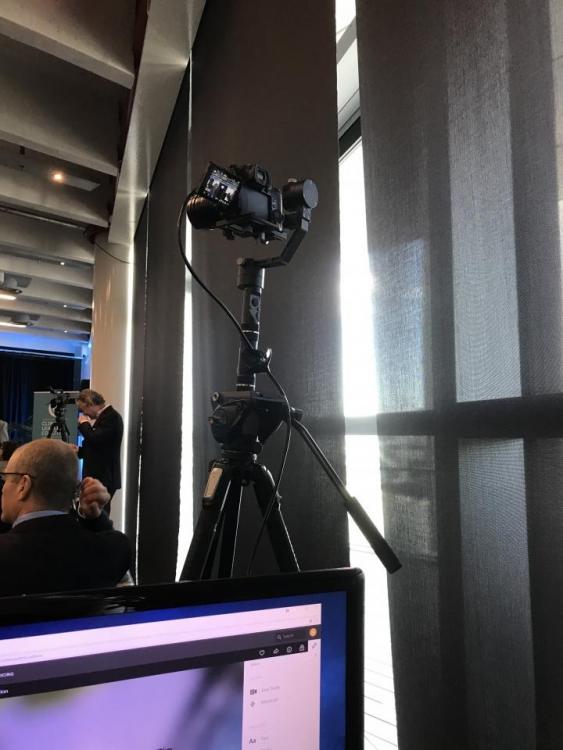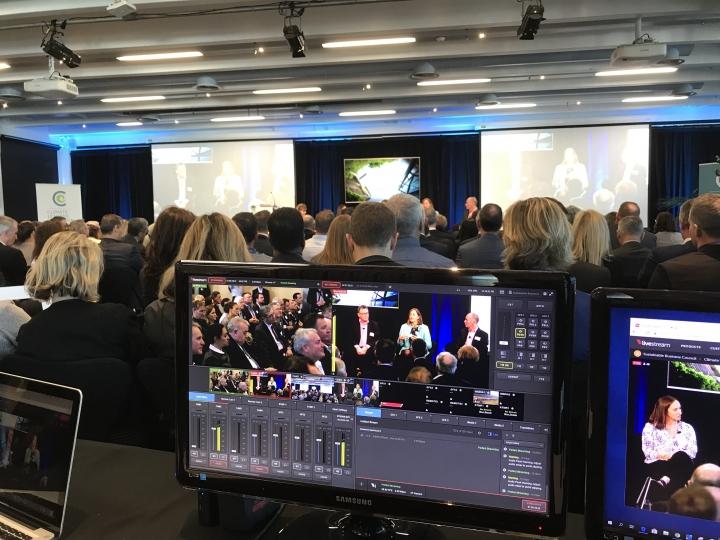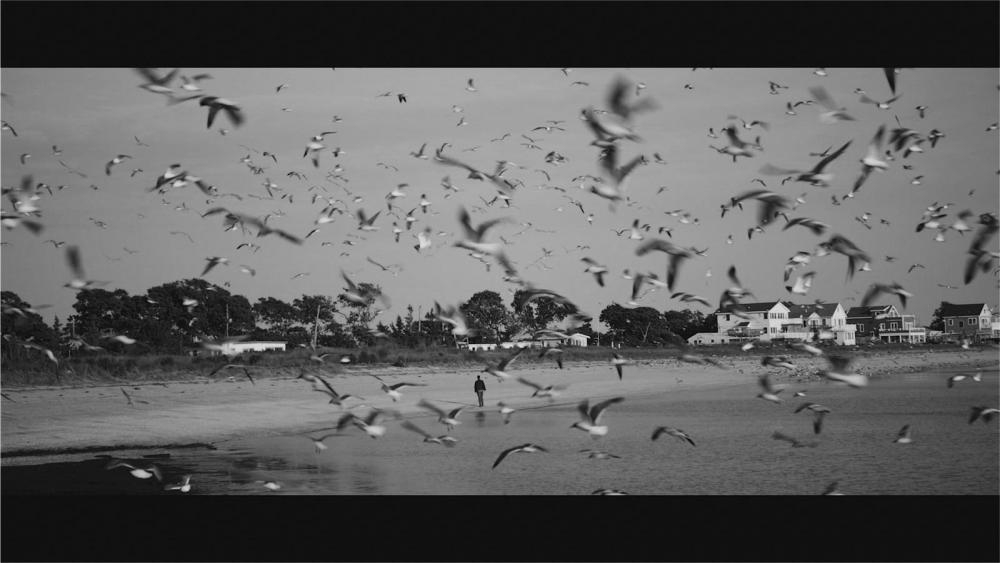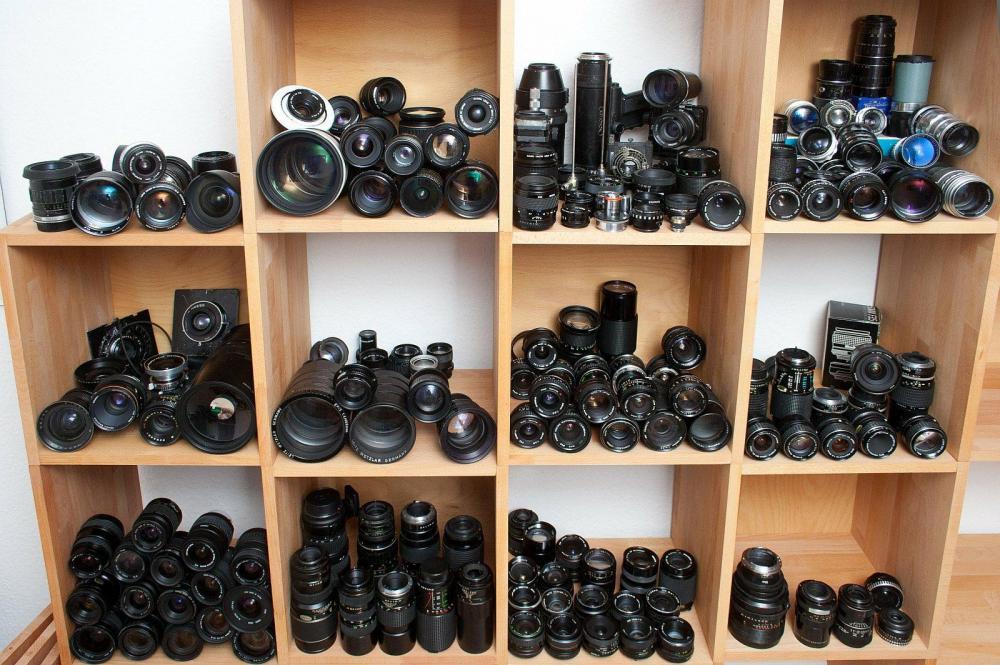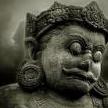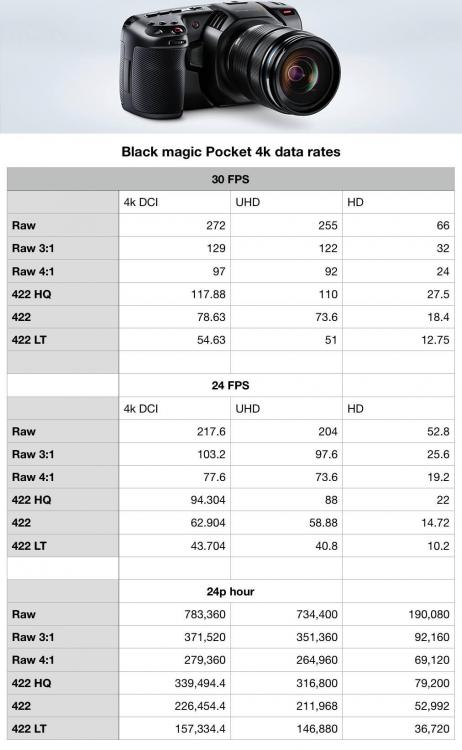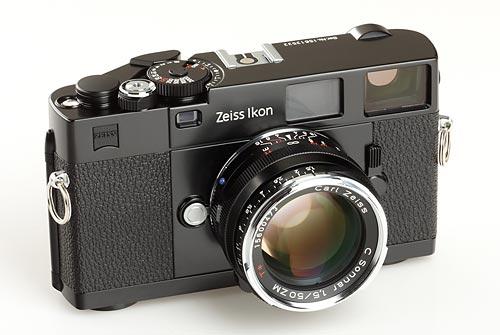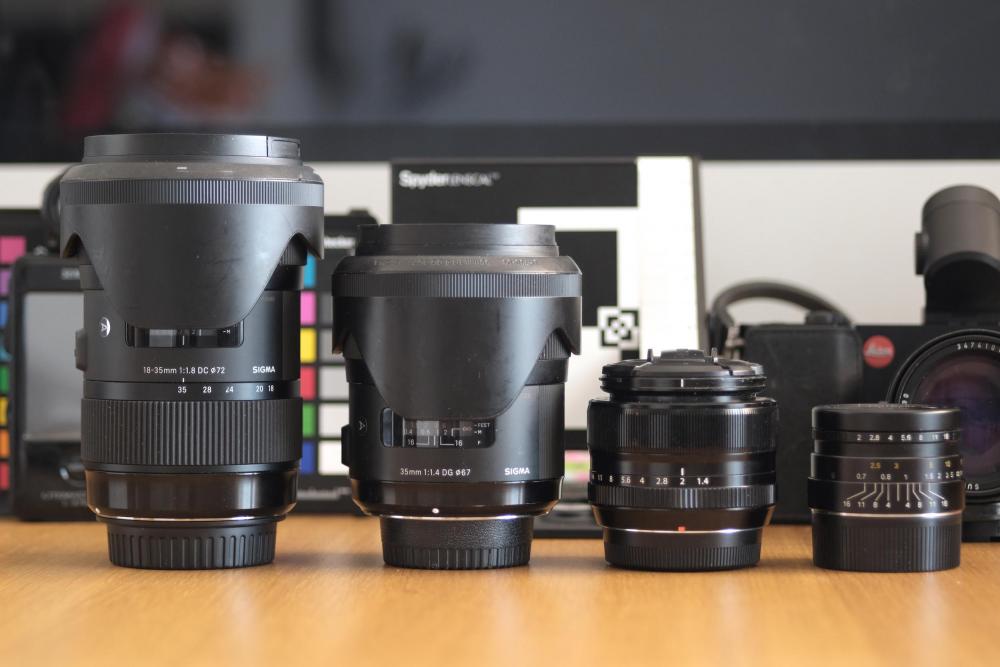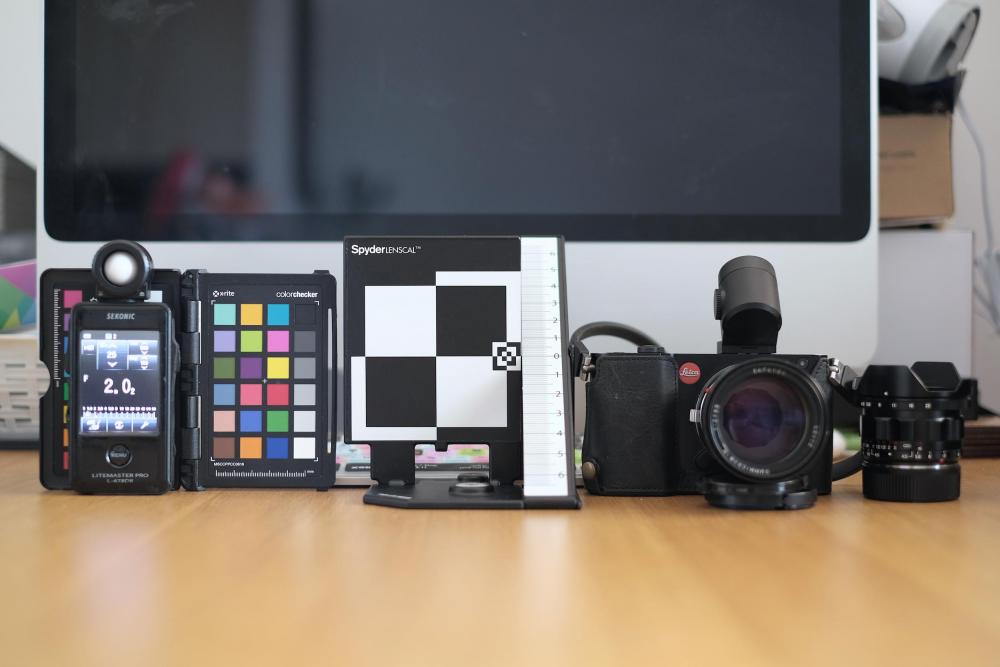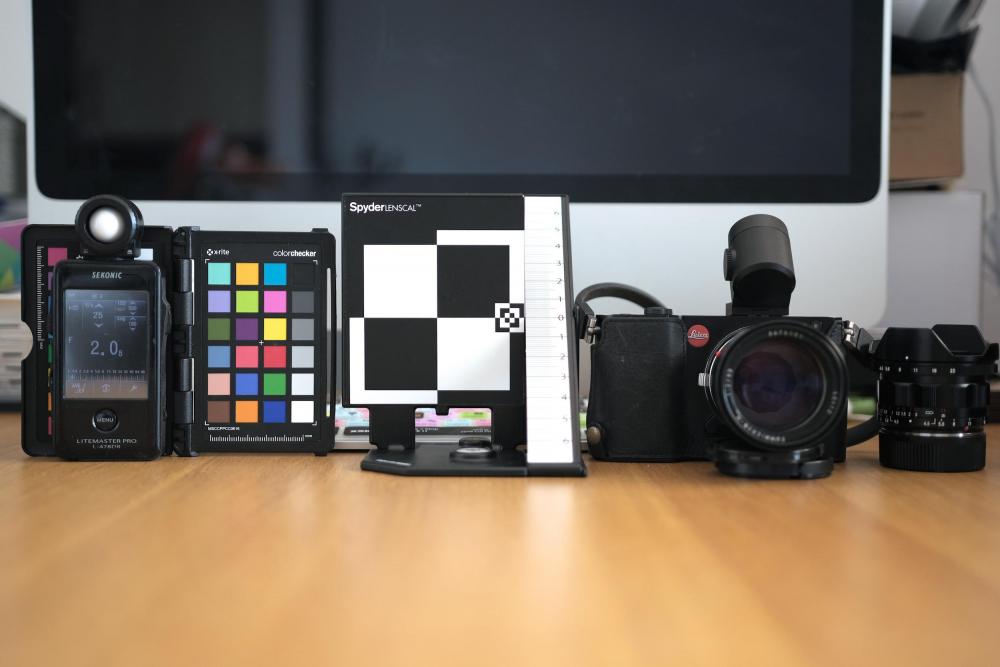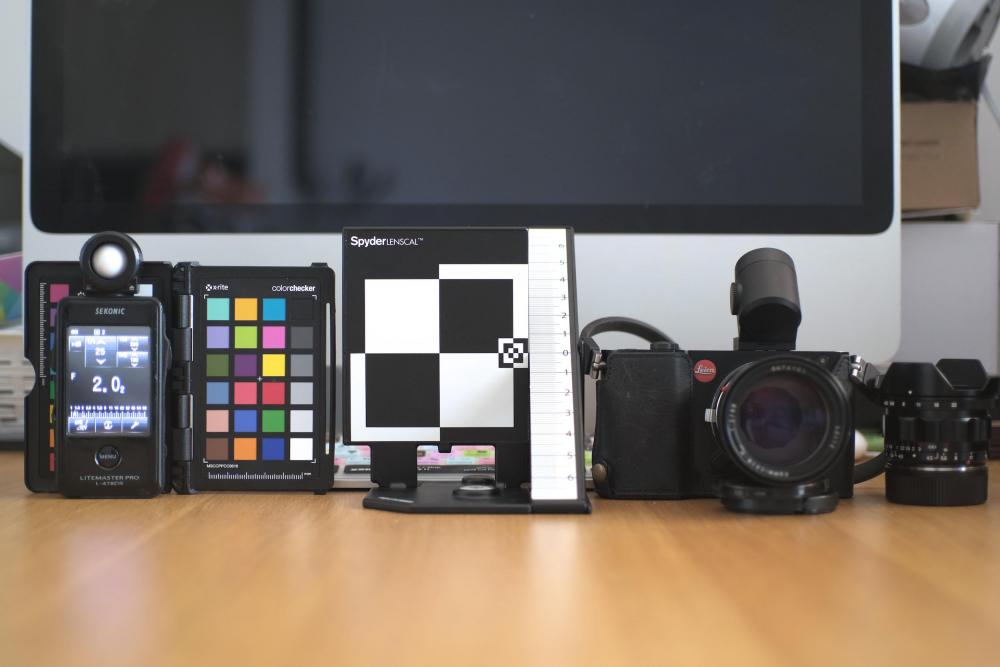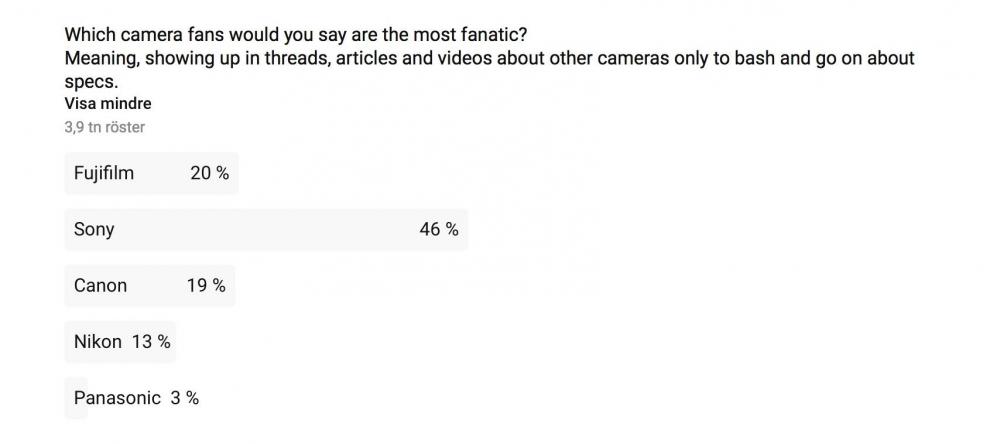Leaderboard
Popular Content
Showing content with the highest reputation on 08/21/2018 in Posts
-
C100 - Mark I, Mark II, or just wait???
MurtlandPhoto and 2 others reacted to newfoundmass for a topic
You're acting like he's planning to buy an XL1 or something! That's an antique. You don't call a perfectly capable camera that meets most professional's requirements an antique because it doesn't shoot 4k or have insane HFR. He'll get superior image quality, vastly better audio, better ergonomics, and the ability to record longer than 30 minutes (a necessity for the content he wants to produce). The C100 is still used by tons of professionals even today. I know at least a dozen personally that shoot on it still, from studio work to going into war zones in Iraq to shoot news/documentary footage. I'm sure if he had the money he'd buy the C200 or C300, even if he still only shot in 1080p. But for under $2,000 and for his specific requirements (wanting to stay in the Canon family), he's not going to do any better than the C100 and it'll still be a relevant and capable camera for years to come. For his uses and budget it's a good investment. Hell, in a couple years he'll still be able to get something for it, probably at least half of what he'll pay for it, if he decides to sell or upgrade.3 points -
We shot event with live switch/live stream/live projection + QA with couple c100mkii and gh5s, works really well, full size hdmi out is a must cause I break so many mini/micro hdmi out cables in the past. We also use 5D3 and M50 with C100mkii for some other shoots, they match really well together vs matching with other brand of camera. (like the GH5S and A7III I own). I wouldnt do C100 on Ronin, too heavy and big for all day shoot, the 6D2/80D will be better for that, especially with touchscreen autofocus and fd and smaller size/weight overall. For stage event 30P is enough, i dont think i ever have to do a slowmo for those kind of stuff.3 points
-
Lenses
webrunner5 and one other reacted to mercer for a topic
I wasn’t either until I was forced to sell my Canon L 24-70mm f/4... now I feel lost without it. I was able to get this shot on the long end and my wide primes wouldn’t have cut it... of course I would have loved a 70-210mm for this shot... Honestly, I’ll probably buy that lens again and then just add to the long end. Now I just need to decide which route to go for manual primes... I change my mind every week. I’ve also just decided I like B&W this week too. Lol.2 points -

Blackmagic Pocket Cinema Camera 4K
deezid and one other reacted to John Brawley for a topic
Edge sharpness. First we should look at the imaging chain. Is there an OLPF ? The absence of one will mean a sharper edge but the increased chance of false colour moire. Sharpness settings in camera menus aren’t compare-able I would have thought camera to camera. Seems like if edge sharpness is what’s being examined then you’re really talking about “detail” and “coring”. These are both setting that are in video encoded products but are not in BMDs camera video processing (except for the broadcast cameras) These are post applied video processing of signals that tries to improve edge sharpness. Some cameras allow the user to adjust these settings. Some bake them in without any user adjustment. JB2 points -
@Cinegain what an exhaustive and interesting list. I agree. Sony seems to have gate-crashed the Mirrorless party. Big time. The fact that it has probably dethroned Nikon in many markets and had dethroned Canon recently in the US, which has pushed everyone in the ILC business into Mirrorless. Both were like Dead on Arrival. The Panasonic GM Series is Even Smaller than the Samsung NX Mini while having a larger sensor and much better image quality. You could add Price to that list, and with the A7iii, Sony seems to have dealt with almost every issue. Various Panasonic (and Olympus?) Cameras do have ETC kind of zoom too, which are similar in function. Obviously with lesser megapixels, there is lesser megapixels to zoom in from . I guess reading from the above and adding a few points, Panasonic needs to address the following: 1. Video Dynamic Range on the Panasonics are mostly disappointing. If the GH5 can do 13 stops in RAW, why should VLog L be in the 11.36 stops range? It is definitely a forced handicap by Panasonic, which is a fundamental flaw witj the video codec (all profiles) on the Panasonics. And if the GH5s can do Over 13.5 stops, then the VLog L is definitely the weakest point on the camera. On the Sony A7 and even the other A Series, SLog has dynamic range in video very close to that of the photo dynamic range, and mostly 13 or more stops (upto 14 stops). On Panasonic other profiles (non-VLog) have another Stop of 2 less of dynamic range, and you pretty much get the picture. 2. Panasonic Needs to move go 14-Bit RAW photo on it's Flagship Cameras (the GH and G Series). The ability to push photos in post is just amazing. Recovery of 3-4 stops of shadows (or highlights), is just phenomenal on the Sony A Series. Panasonic Needs to implement this. 3. Panasonic Needs to have PDAF. There is no other viable option. DFD is like 1-2 years behind the competition (wrt PDAF), and this is most apparent in video. 4. I am wondering whether Panasonic needs to Explore Image Fusion from a much smaller sensor like on Dual Sensor Smartphone Cameras? It could use the recently announced 1/2 inch Sony 48MP IMX586, sensor along with a 20-24MP M43 Sensor, combining information from both, and having excellent low light and very high detail for a 24MP Sensor, or have the option for 48MP in reasonably good light. Plastic lenses and other shortcomings and handicaps of smartphone cameras can also be dealt with this way. 5. Like someone suggested above, I too feel Electric NDs should be a standard on Panasonic's GH Range. That could really be an added feature in the next GH Series camera. 6. The GH5s has shown that there is a market for non-IBIS and IBIS Cameras, in the GH Line to co-exist. Also, the JVC's GY-LS300 has shown that there is scope for a larger sensor inside Panasonic's M43 Mount cameras. It can help with much larger pixels or much higher pixel count, or both plus multi-aspect zooms. 7. While I never got to use the GM1 or GM5, a lot of people swore by them as being the best travel cameras. I am not sure why Panasonic ended that line so abruptly. Like someone mentioned above the 12-32mm is such an amazing compact zoom. Even the GX9 seems to be a strange decision, the GX8 after the GX7 and the GX85 in between. That entire line seems to have no consistency or roadmap. Which, unfortunately doesn't speak very well about the product line and the guys planning it. 8. I guess Most Importantly while Panasonic and Olympus and many others M43 partners (Sigma, Voigtlander etc), are making some great glass, M43 is in need of some Super Fast 3x Zoom Glass like the Original Zuiko f2 Zooms, only with OIS and much faster autofocus. Like f2 12-36mm and f2 35-105 Zooms. They could have built-in speedboosters if it helps. 9. Panasonic does need a Higher Resolution (24-28MP) Model, and should not make all sensors around the 20MP cap, that seems to be the current standard. Edit: like @jonpais mentioned (and so many other too), Panasonic's 400mbps is just too heavy a codec, and Panasonic needs a 100mbps equivalent of Sony's XAVC-S present in Sony's Slog, with the full dynamic of VLog (not in its present form, but in one that exploits the sensor's full dynamic range). The 400mbps is very processor and space heavy. And it doesn't justify the heavy bitrate.2 points
-

Is it really coming?! The LX100 II?! August 23?!
frontfocus and one other reacted to Cinegain for a topic
Putting it like that sounds like you're giving it a bit too much credit. It's more like a LX100... with a touchscreen, USB charging and new sensor/processor, which is... a bit lame if you ask me. I'm disappointed they didn't do more with it. That's not what 4 years of learning and listening should look like. Guess they're pulling a Canon here playing a segmentation game like that...2 points -

Blackmagic Pocket Cinema Camera 4K
jbsloan and one other reacted to webrunner5 for a topic
2 points -
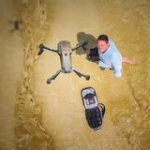
Wishes for 10 years on from the birth of mirrorless
webrunner5 and one other reacted to Robert Collins for a topic
M43 offers both limitations and advantages for video. However, their C-AF for video is totally unacceptable when compared to the competition and if they dont sort this out properly, I think the will continue to lose market share. I realize a lot of people here dont use or care about af for video but the average hybrid buyer will take it if he can get it. Panasonic has absolutely no excuses - they were the first company into mirrorless. I dont see a future for Olympus in the camera business. They are forecasting to lose US$60m this year on sales of US$600m (their 8th loss in the last 10 years.) To put this in perspective - Olympus will lose US$150 on each of the 400,000 ILCs it expects to sell this year. This is not a business - it is a charity. Sony has really stirred things up by releasing the A7iii - with such a strong feature set - at US$2000. They pretty obviously did this to position themselves pretty aggressively against the new competition they expect from Canon and Nikon. However all the other mirrorless manufacturers have been moving relentlessly upmarket for the last few years. According to CIPA the average shipped price of a mirrorless ILC has doubled in the past 6 years (while the average price of a DSLR has increased 20%). But a side effect of Sony's US$2k FF is that it somewhat pulls the rug out under the US$1500-US$2000+ market for ILCs with smaller sensors (including Sony's soon to be released a6700.) Still photographers tend to be sensor size snobs. Meanwhile I think Canon will continue to do well at the bottom end of the market, because it is the only manufacturer who focuses there. Mirrorless made up 36% of ILC shipments in the first half of 2018 - good chance it will be over 50% in 2019.2 points -
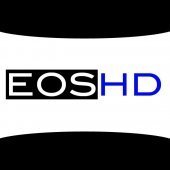
Fuji X-T3 has 4K60P and 10 bit
Drew Allegre and one other reacted to Andrew - EOSHD for a topic
Fuji film simulation in 10bit. Yes please. I bet the AF will be pretty handy as well. Still enjoying X-H1. Personally I would be tempted to wait for the update to that rather than X-T3 though.2 points -
https://www.fujirumors.com/fujifilm-x-t3-video-4k-at-60p-10-bit-and-zebra/ I could not care less about this APSC camera but I like this. The more 4K60p 10 bit camera on the market, the more chance people like Sony put this (or better) in their cameras like A7S III. I would love to have the new Nikon Z camera having 4K60p... would be amazing and would replace my A7III (assuming AF is as good).1 point
-

Rawlite OLPF for UMP
mercer reacted to AaronChicago for a topic
I just installed a new Rawlite OLPF into my UMP, mainly for IR cut purposes, but also to take the edge off of sharpness. Take a look at the before/after below. Skintones are much improved under tungsten lighting. Here is a moire test on Rawlite's site: http://rawlite.com/olpf-for-blackmagic-ursa-mini-pro-4-6k/1 point -
I guess while this Site is called Eoshd.com, it was the GH2 (and its various hacks) that really got things going, and the various models of M43 cameras that got most indie filmmakers excited around here. The Sony A7iii seems to have ruined the party for a lot of people, way more than one could imagine. And the below $2000 price tag has suddenly made things harder to sell, for almost everyone (Including Sony's own models that can be easily replaced by the A7iii, due to its price advantage, and plethora of superlat8ve features for the price). It was the 10th Anniversary of the birth of the M43 and Mirrorless format, last week. While the GH5 and GH5s, and the Olympus OMD 1D are great cameras, their (former) $1999 price seems a lot, especially for Olympus. What all areas do you think Panasonic and Olympus need to work on, to push the Mirrorless advantage for Mirrorless, now that Nikon is also finally crashing the party? Suggestions could be anything from the high bitrate (with no noticeable advantage except in very heavy grading) to the low dynamic range of VLog (between 1.5-2 stops below that of the sensor's in RAW), to the Lack of 14-abit RAW to lack of PDAF (on the Panasonic) etc.1 point
-
1 point
-

Lenses
heart0less reacted to BTM_Pix for a topic
OK @mercer I don't have anything as exotic as that Zeiss left. In 35mm, the only Zeiss prime I have is a very old Flektagon 35mm f2.8. I also have the short end of the Zeiss 35-70mm f3.4, the short end of the Minolta 35-70mm f3.5 MD and the long end of the Canon 16-35mm f2.8 L as a comparison. All of which I can persuade on to a Sony A6500 tomorrow if you want? As a micro contrast bonus (albeit slightly wider ) I can throw in the 30mm version of the Sigma f1.4 ART on a Sigma SD Quattro. (though this may make you weep openly and cry "Why no video on Foveon, Sigma? Why, why?")1 point -

Wishes for 10 years on from the birth of mirrorless
webrunner5 reacted to BTM_Pix for a topic
I'm not sure why they would be any less "PRO" when they might well have extremely high quality Canon mount lenses attached to them? The adapters are such an integral part of the process for people using these cameras that they are permanently attached to the camera and so can be more or less considered the de facto lens mount. Changing the lens means just changing the lens as if it were a native Canon mount at that point. This is also true for cameras like the Sony FS5 and FS7 where a large number of them that are used in professional environments every day permanently use an EF adapter. I'm not sure where I've suggested MFT cameras are in common use on large budget TV shows and feature films by the way? Even if that was the suggestion, there are numerous reasons why they wouldn't get used in that environment that would take precedence over the lens choice, native or otherwise. I have a RED Epic and a set of PL primes and my Panasonic GX80 can mount all of them and use them in exactly the same way so if those lenses are not limiting the RED then they can't be limiting the Panasonic surely? Absolutely everything else about it would be of course but not the lenses I'm not trying to have an argument with you for the sake of it by the way - as I think the native offerings could be cheaper as well for one thing - but I do disagree about the lens choice being the limitation when it is adaptable to so many different lenses. For what its worth, I think MFT as an imaging format in terms of cameras from Panasonic and Olympus is probably in a bit of an awkward place right now but its more to do with the internals than the lens options. MFT as a mount with cameras such as LS300 and probably the BM4K behind it is a different situation but, again, the E mount is catching and probably overtaking it in terms of utility.1 point -
Yeah this site does some weird stuff to contrast too. Thanks for your help! Any chance you have any of the Zeiss ZF lenses... the 35mm f/2 Distagon is supposed to have amazing micro contrast and I’m looking to shoot more B&W in the coming months so that lens is on the top of my list... I can probably go handheld with it too if I don’t drink too much coffee or smoke too many cigarettes that day... so maybe not handheld...1 point
-
I would say the measure of a codec is how it looks. If something looks great and has a lower bit-rate then I would say that is a BETTER codec than one that takes more bitrate to look as good. Of course, no-one is suggesting that a sub-40Mbps codec is going to grade like RAW..1 point
-
Yeah, the 18-35mm is almost like a freak of nature the way it stands up against primes. The 7Artisans fits in the pocket somewhat easier in both senses of the word though ! Now that I'm not only sipping the Leica Kool Aid but feeding it in on an IV line, its my new best friend. Its worth bearing in mind as well with the (yes I'm going to mention it again) TechArt Pro adapter these small M mount lenses from 7Artisans and of course Voigtlander are given another dimension by being able to become auto focus on Sony E mount cameras. I have the X-T2 and the X-T20. The X-H1 IBIS looked troublesome to me during the early tests I saw of it and when internal F-LOG was given as an update to the X-T2 my interest in the X-H1 cooled completely. My take away is how much degradation there is on images when you upload them on here !1 point
-
Just curious — how many cameras with reliable AF has a really crap codec? You could argue that the C100mk2 has a rubbish codec on paper yet it looks nice and is plenty gradable as long as you get you exposure right.1 point
-

Samsung eying return to camera market as Galaxy smartphone shipments fall
webrunner5 reacted to BTM_Pix for a topic
The Zeiss Ikon ZM M mount stopped production about 5 or 6 years ago I think. Looks like this new one will be a fixed lens digital version of it like Leica have done with the Q, albeit with a 35mm instead of a 28mm. The Zeiss f2 35mm is about £1000 and the f1.4 is about £1600 so if the price quoted for this new one is right you would imagine it might be the f2 they have in it but if its the f1.4 then...well...that would be very interesting against the RX1Rii and especially the Leica Q.1 point -
I've done a quick test for you of a prime ART against a zoom ART at the same focal length along with a couple of other 35mm lenses for comparison. I shot it on the X-T2 as it was the most universal mount as the lenses are EF, Nikon F, Fuji and Leica M mount. Lenses are : (L-R) Sigma 18-35mm f1.8 ART, Sigma 35mm f1.4 ART, Fuji 35mm f1.4 and the wildcard 7Artisans 35mm f2 M Mount. Everything was shot at f1.8 to match the 18-35mm at the same exposure with the exception of the 7Artisans which was f2 and exposure adjusted. All of them are jpeg out of the camera using the ProNeg Standard profile. The camera was locked off on a tripod so the FOV variance is due to the lens (and/or internal corrections in the case of the native Fuji lens) rather than a change of shooting position. And, yes, the backlight on the light meter did stay on longer during the Fuji and 7Artisan shots hence the reflection in the table. OK, here they are then. First up is the Sigma 18-35mm f1.8 ART Next is the Sigma 35mm f1.4 ART Next is the Fuji 35mm f1.4 And finally here is the 7Artisans 35mm f2 For reference, the current price of these lenses on Amazon in the UK is: Sigma 18-35mm f1.8 ART - £641 Sigma 35mm f1.4 ART - £649 Fuji 35mm f1.4 - £499 7Artisans 35mm f2 M Mount - £2491 point
-
Agreed with the above. With +4 hours of battery life, unlimited record time, dual SD slots, ND filters, internal stereo shotgun mic (and XLRs if needed), Dual Pixel AF, a 4K downscaled to 1080p sensor, uncompressed 4:2:2 recording via HDMI, top handle and pivotable side grip ergonomics allowing steady shots without IBIS, Super35 sensor from the C300, peaking/zebras/waveform assist.. and it's current price tag, the camera still easily surpasses most current cameras in quite few departments..1 point
-
@Danko announcement is in 1 day 19 hours... but best believe this is only the start of their marketing campaign.. Notice the coming soon slot after "Photographers": https://www.nikonusa.com/en/nikon-products/mirrorless-is-coming.page Btw, there is no official mention of anything specific on the stills side either (AF, megapixels, DR etc).. just generic stuff like "more pictures you take the greater it is" "shooting becomes addictive" "when you zoom in you're still super sharp" lol..1 point
-
@Cinegain - great love letter to m43 post.. ??? You covered most aspects and I agree with your analysis on most things. I think that the A7iii, GH5, and the Pocket2 are going to occupy special places in people's equipment lists for a long time yet. I'm looking forward to the Pocket2 vs ARRI videos that are inevitable (Potato Jet YT channel I'm looking at you!) because when I think about the differences between compressed video and RAW video and then I look at the A7iii screenshots that @jonpais is posting I'm struggling to imagine there will be a huge difference between the Pocket2 and high-end cinema cameras. Certainly nothing to justify the price difference when looking at the images anyway - I'm aware that high-end cinema cameras offer a huge amount more than just good images. I definitely don't represent the average user, and I feel caught in the middle of these three cameras as each offers something I would genuinely love. The A7iii represents the best compromises for me personally but I'm not at all against smaller sensors. I currently have the XC10 and in many ways it is the perfect camera. It has 30+minute recording times, a reliable thermal solution, really nice 4K with a high bit-rate (305Mbit), long battery life, a flexible 24-240mm equivalent lens with solid IS, c-log, built-in NDs, ergonomics DSLRs can only dream about, etc. The only reason I'm considering upgrading is that it doesn't have the 'look' I want with a shallow enough DoF. I completely agree with you about bokehmania being a passing fad and you say that no-one really needs anything better than f1.4 (which IIRC is 2.8 FF equivalent?) and I agree, in fact I'm happy to settle for F4 FF equivalent. For me having shallower DoF is about having my images look less flat and have a bit more depth in them, so the choice is creative instead of trendy. I did some tests with my APS-C camera and 18-35 1.8 and when looking at the frames decided that the F2.8 (F4 FF equivalent) was sufficient, anything else would be nice, but would be a luxury. I've shot a few test videos at APS-C F1.8 and I find the look too strong on almost every shot. As you say, things should have a 'sense of place'. The setup that is "winning" for my needs right now is the A7iii with the 24-105 F4 as this would give me the flexibility to shoot my home and travel videos where I'm shooting a landscape one minute, a bird 200m away the next and then a portrait of one of my kids the moment after that. That lens combined with the crop mode and clear image zoom provides about 24-250mm which is flexible enough for my needs. Unfortunately FF seems to be the only system that has that combination of aperture and zoom range. As a bonus, the IBIS + OIS of the combo will also help the good but not great IBIS (the 24-70 F2.8 doesn't have IS). The AF will be great for me because my brain often can't deal with the chaos of a family holiday plus trying to anticipate what is about to happen so I get the shot plus actually taking the current shot, let alone doing down-to-the-pixel MF. It seems to me that the GH5 is great for slower film-making where there is time to change lenses and do MF but allows hand-held and lightweight setups. The Pocket2 will be fantastic if you have time to change lenses, do MF, and you can put it on a tripod or gimbal. The A7III will be great for those who need the flexibility of zooms without compromising the shallower DoF. @Robert Collins I agree about the convergence of photo and video being a big deal. One of the key advantages is being able to crop into the sensor but retain full resolution like the A7III. This is an advantage over dedicated cinema cameras because they tend to have sensor resolutions that match their output resolutions, or are slightly higher (like the 4.6K Ursa). This gives a tremendous flexibility. For example my 700D / Sigma 18-35 is 29-56mm equivalent, but the 3x crop in ML makes it a 87-168mm and gives it enough range so be a walk-around lens, not to mention my 55-250mm is both an 88-400mm equivalent and a 264-1200mm equivalent, and that crop mode comes in hugely useful at my kids sports games and they're on the other side of the field. This is for 1080p - when the 45+MP sensors start being used like this we'll be able to get 2-3X 4K crops, if any of the manufacturers are that bold, plus the full-sensor will be 8K capable. I have no idea what the market for a C100 sized camera that shoots 8K video would be in, say 2021, but it would sure be an interesting thing to see.1 point
-
First time i've logged in for many months as I have been so happy shooting with my XT2 that other camera news didn't interest me... But this was worth a log in! I absolutely love the XT2, but banding is a problem, so 10bit should fix this. Fuji colours are just so, so beautiful (even better than Canon) and the Eterna lut/simulation is so nice. If the AF is further improved, this will be the camera of the year. It amazes me that so many people ignore Fuji, but I actually quite like it that way... Feels like being part of a select group. Stills are exceptional, the lenses are beautiful, solid video specs, good DR, the best skintones in the price range and constant firmware updates. I think this select group is about to get alot bigger though, once people see the Fuji colour in 10bit glory.1 point
-
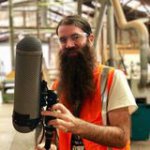
C100 - Mark I, Mark II, or just wait???
newfoundmass reacted to IronFilm for a topic
Not just folks who still use the C100 as their main camera, but there are lots of people I know with say a FS700/C300mk2/UMP/REDs/etc who still bring out their C100 on a semi regular basis for their cheaper/smaller jobs such as the OP mostly does.1 point -

C100 - Mark I, Mark II, or just wait???
jonpais reacted to webrunner5 for a topic
This is his cost statement. "BUDGET: Top of my budget is around $1800ish and that would get me a c100, or if I sold my 80d, could be a stretch to get the mk2, but I feel 1 extra job will pay for the rest." He is not going to bring Anything new to the table from what he already has with a C100, no matter the model. In this day and age a C100 is an antique. And with 1800 bucks he Ain't buying no (FS5/FS7/LS300/UMP/etc).1 point -
C100 - Mark I, Mark II, or just wait???
newfoundmass reacted to HockeyFan12 for a topic
What lenses were you using with the C100? In my experience the output is dramatically sharper than any Canon dSLR, and sharper than downscaled 4k Red to 1080p or Alexa 1080p... (not as sharp as 3.2k or 4k when upscaled, though). Absolute night and day difference, same with dramatically better lack of aliasing, better color, incredible battery life, better low light (even than the 5D III raw, which is also much softer than the C100 with less DR) etc. Better sensor than the Red MX, imo, and a half stop better dynamic range, just a much worse codec. (Dragon sensor is another story–better than either except for low light.) I'm not trying to call your experience with it into question, but I'd make sure you were using good lens samples and exposing properly if you got those results since it's far from my experience with the camera. (And I've shot it extensively as a b camera next to the C300, F5, Red MX, BMCC, Amira, Alexa, new Varicam, etc. and a lot of that footage ended up on tv, including tier one cable and I think even Netflix, where it intercut seamlessly.) While it's my absolute favorite camera for the money, I still basically agree that it's not going to offer much over the 80D for web shooters. Yes, you get a much much better image with far more dynamic range and better tonality, but for most clients, either image is good enough and for those clients who require something really good... most of them don't want AVCHD and do want timecode sync. And the external recorders are a PITA and the lack of timecode sync sucks. I had to use them then sync with plural eyes and I can't stand them and can't stand plural eyes, either. So I agree with your sentiment, but not your experience. I suspect the lenses you were using with the C100 were faulty (shoddy adapter resulting in incorrect focus marks or something) in some way if those were your experiences. I do agree that the Mk II is too long in the tooth to command its current price, but I find the Mk 1 to be an absolute steal at $2k. Personally, I would look to the C200, except it lacks proper timecode sync, too, so maybe I'd look to the FS7, but by then you're getting a quite large camera and quite expensive. ? Of course I disagree respectfully, just trying to offer my own experience. But I'm stumped re: your experience with sharpness and DR as it does not mirror my own at all. I also find the neutral NDs to be a godsend, even if the strongest one isn't strong enough. Never had any luck with ND faders (color shift and the cross polarization messes with skin specularity) and even IRNDs have color shift, so I'm a big fan of internal NDs. Same with the ergonomic improvements and video features (waveform monitor, focus peaking, etc.)–indispensable. But the EVF is unusable and lack of slow motion is very ten years ago. I agree there. I'm not saying it's the right camera for the OP, just that its sharpness is stellar and I didn't share any of your ergonomic complaints except the EVF.1 point -

C100 - Mark I, Mark II, or just wait???
kye reacted to webrunner5 for a topic
Well stated. I don't see enough real gain over the 80D, 6D mk II either to be honest. They both have DPAF, flippy screens, and 60p touch to focus. What is even the C100 mk II bringing to the table other than ND filters, and a bit sharper output? And he is not going to need the ND filters for what I see he is shooting.1 point -

C100 - Mark I, Mark II, or just wait???
webrunner5 reacted to kye for a topic
In terms of budget, I'd say that you're about to spend a large sum of money so you should get a large upgrade. Buying something that only adds a little to what you can do wouldn't be worth it. It sounds like you already have enough cameras for your multi-camera setup, so buying another one isn't a huge value-add. In that sense you might be better off selling one of your existing cameras and using that extra money to make sure your purchase really gives you a lot more than your current setup. I find that if you have analysed the problem well enough then the solution becomes obvious, so try making a list of all the current pain points in your setup (is it stabilisation, is it the 30 minute limit, is it something else?) and then rank them as to what the biggest ones are, then you'll be able to tell which potential purchase will give you the most benefit. Good luck!!1 point -
Yep, not even the FS5 does 10bit 4K. If Fuji delivers, I'm not sure why people would be so dismissive of this camera. 10bit, great colours straight out of camera, 4k60p and the best lenses if you want to stay compact. It's what everyone wanted a year ago and all you really need today for 99% of the time. Hey Fuji, now give us an FS7 or C300 style camera with XLR and TC inputs, high data rate recording (ProRes or Dnx?) and paired with your wonderful and affordable fujinon cine zooms, we'd have a great A and B Camera system.1 point
-
C100 - Mark I, Mark II, or just wait???
mercer reacted to BrunoLandMedia for a topic
Wow, Thanks everyone for your thoughts. I should have been more clear about absolute needs and workflow. When I arrived at this job, all I had was the XA10 camcorder and two 720 handycams. I did the best I could. I started bringing my 70d in to do all the run and gun stuff, and finally after a while convinced THEM to buy me an 80d with the 18-135. That was the max budget I could get out of them. I couldn't just "save" that 1000 so I went ahead got the 80d. I personally have always had DSLR for my family, music, and travel and the 6dmk2 clicks my boxes there so then I was a 2 DSLR show and the old XA10. Now with a little more money and possible selling the 80d, I am looking for real video. 1. No 4k needed, and not wanted really. I do things like Go to Kindergarten while the paint pumpkins. Take real quick B-roll of all the actions, cute shots of them together. Super tight, super wide shots, mostly on mono pod (Gimbal in future) head up to my office and turn around a quick 1-2 min video in an hour. 4k would crush that workflow. And I do this all the time, a few times a week along with all these other videos I'm doing. 2. Need a "no time limit" camera. This is why mirrorless won't work for this camera. Maybe one day, I'll dump the 6d for canon's new mirrorless or something else, but that's not the question right now. 3. Much better picture in low light, mostly situations where I don't have ANY control of the light. Better than 80d or 6dmk2. 4. Oh, I also need to stream 1080p HDMI out which I know both c100's do. I feel like the mk1 could keep me with the 80d/6d for the 60p and run and gun work and maybe that is just stupid. Just go for the mk2 and use it for everything. Then I wouldn't have to worry about changing cameras all the time, just adding cameras for performances. Cheers1 point -
I really love M43. My first interchangeable lens camera was the GH2 after having seen the Philip Bloom Christmas Special and Zacuto Shootouts where it punched well above its weight. I had considered the Canon 600D before, but I settled on M43, of which a big reason as well was that it was mirrorless and had a 'tiny' sensor, meaning lenses could be kept really compact, which was and still is a big thing if you're traveling around (and I'd rather have lenses be small, than shaving a few mm off a camera body, something I didn't understand about the APS-C E-mount line-up that had it all wrong (and then some)). Naturally progressed with the E-M1, BMPCC, GH4, G7. Then previously we had seen built-in sensor stabilization, but regarding Panasonic cameras it was really only used for stills. The GX80 changed that and with the tiny kit zoom (that still fools me with its ring, that I keep want to focus with (it only has a zoomring)) or Leica 15mm f/1.7 had the almost exact same formfactor of the premium compact LX100. The G80 gave you a mini GH5 before the latter was actually out and about. Still a very awesome hybrid camera, I doubt we'll see such a good value package again. Now the flagship stills shooter is the G9, which I have as well. It's a pretty awesome camera and does a lot of the basic video stuff as well, sport that huge EVF and extra push of hybrid IS. Of course I had to get the GH5 that ultimately was a video production beast, with all the bells and whistles. That's what I love about Panasonic. Where else are you getting a camera body with weather sealing, dual cardslot, vari-angle touchscreen, fullsize HDMI, complete audio interface, great batterylife, nice buttons/dials/joystick & customization options? Then internally, some of the best sensor stabilization, 4K60p, 10-bit options, limited rolling shutter, V-Log L, HLG, anamorphic mode, all the focus and exposure aids and overlays, incl. like waveforms/vectorscope. It's pretty dang crazy! I doubt you can fault the camera bodies or the system itself. There's so many lenses to choose from in all kinds of sizes, budgets and quality. And the shallow flange allows for adapting third party lenses easily (the E-mount is better though). So... as a system I believe in it a whole lot. But it has gotten a lot of hate for its 4/3" sensor. Cameras were never all that great. But the A7S really rollercoastered things up. Pushing a GH4 beyond ISO800 was a crime against noisemanity and damn how convenient would it be to have a clean ISO1600, 3200, 6400? Dynamic range was never really up-to-snuff either. Always had this contrasty look with blown-out highlights and crushed blacks. Colors tempted to go orangey. But you have to admit that the recent developments are hella impressive on the post-GH4 generation cameras. What people are complaining the most about now is C-AF... yeah, I feel like Panasonic placed a bet on the wrong horse going with depth from de-focus. They should just admit their wrongdoings and change things up with the next gen. But it has to be said... C-AF never was great and it certainly wasn't as great as it is now. Yet... we always made it work. Think DualPixel AF has really spoiled a lot of people. Of course I applaud anything that's extra on a camera, the more the merrier and can be super practical at times (e.g. on a gimbal stabilizer), but to me it certainly is no dealbreaker. ISO sensitivity and noise performance is getting there. I think colors are about where they should be as well. Dynamic range is I think still one of the biggest issues with these cameras, although highlight roll-off and recovery has become much better already. One other thing that bothers people about the MFT system... the depth of field isn't as shallow as you'd get with fullframe. Well, that's a given. But honestly, we've got so many epic lenses and there a focal reducers. It's at a point that criticism is more like bokehwhoring. And you don't always need to have silky and creamy backdrops. Give your scenes some goddang context. People have become way too obsessed with blurry backgrounds what I'm concerned. Get any nice f/1.4 Sigma lens on MFT and you shouldn't need to wish for much more. What would I like to see in the future? Well, it's healthy for the system if it got some more love from other people. So, it would be great to see people loving C-AF with it, rather than hating on it. Dynamic range and further improvement on color and sensitivity, combined with sensor stabilization is something I'm personally looking forward to. Not sure how far along they are with the organic sensor and global shutter developments, but such implementations would be interesting to see. Would also be interesting if they could work in some kind of ND-trick. Maybe set-up photosites as such that they have multiple base levels and never allow to clip or crush data (no need to protect highlights or shadows, get 'em both!). That they can drop sensitivity like an ND filter, a low and clean ISO band (ISO8-128 or some shit) if you will, without the need of optics. There's also still the possibility to pull something like we've seen implemented on the JVC GY-LS300, pairing the MFT mount up with an APS-C sensor behind it. So... I don't think MFT is done for quite yet. I actually think it has improved significantly over the years and is an amazing piece of kit. There's already very little to complain about, so the future must be completely nuts. I do not care that the A7III is coming in at just below $2k for the camera body. If anything it will no longer have it make sense for Sony themselves to bother with the A6x00 series, that keeps camera bodies so small there's a lot of problems I have with them and neglect a dedicated line-up of compact lenses for the system (forcing you into mostly using fullframe E-mount lenses). Why would you get a 1799 A6700 when you can get an A7III for 200 bucks more? Because the crop works like a teleconverter? Well, you can use these FF cameras in S35 crop mode and the sensitivity and detail nowadays hardly gives the dedicated APS-C sensor an edge there, if any at all. Nikon and Camera mirrorless systems will likely only be fullframe and hella expensive, so don't just count me in there either. I like MFT. To me the G9/GH5/GH5S/E-M1mkII are the finest camera bodies on the market, that makes it fun and easy to shoot with. Mostly I love the fact that you have the option to keep lenses really dang small. Maybe it's the Laowa 7.5mm f/2 MFT, the Leica 15mm f/1.7, Olympus 17mm f/1.8, Lumix 20mm f/1.7, 42.5mm f/1.7 or Zhongyi 25mm f/0.95... that's just so awesome. I wouldn't be getting that with the A7III. At the same time of course I could opt for bigger and more quality lenses, that's just another option you have. Olympus PRO, Sigma, Leica, some really good stuff can be had. And you can frankenrig things up as you see fit. Throw on any lens you want and make full use of the sensor stabilization! Throw on cages, rails and have at it. I don't know, personally I haven't lost excitement for the system. And there's not just Panasonic and Olympus anymore. There's DJI, Z Cam, YI Tech, et cetera putting their own spin on things. We certainly haven't seen the last of it! Most of all I'm excited now for the BMPCC4K. How awesome is that going to be? Cinema MFT FTW! ?1 point
-
C100 - Mark I, Mark II, or just wait???
mercer reacted to MurtlandPhoto for a topic
I shot with a set of 3 C100's exclusively with a past employer. When I left and the company was looking to offload them, I begged to buy one because I'd grown so fond of them. There is not a better get-out-of-your-way camera with a high quality image at a low datarate than the C100. If you don't absolutely need 4k, I wouldn't hesitate to pick one up at their current used prices.1 point -
Wishes for 10 years on from the birth of mirrorless
IronFilm reacted to newfoundmass for a topic
Auto focus is a necessity, not so much for me but for those that have become obsessed with it. The GH5S showed that good low light is possible, and even the GH5 showed that low light capabilities are improving over previous cameras, so that's not a major issue these days, but narrowing the gap in low light performance is obviously something they need to continue with. I think exploring a APS-C sized sensor might be something they should look more into. With adapters it can get you very close to full frame, which is another thing people seem to becoming more and more obsessed with. Overall though I think Panasonic has done a good job developing the system. Nearly 2 years after release I think the GH5 is still worth every penny and is still the only camera in its class capable of doing so many things.1 point -

C100 - Mark I, Mark II, or just wait???
IronFilm reacted to Mako Sports for a topic
It helps to have options though, something you never even considered might be a fantastic choice for your described uses.1 point -
https://nikonrumors.com/2018/08/20/what-if-the-nikon-d3400-gets-replaced-by-a-mirrorless-aps-c-camera-with-f-mount.aspx/ There is this last rumor coming out of nowhere about a future Nikon D3000 (lowest denominator in the Nikon lineup) camera coming soon, still with the traditional Fmount and Mirror Less. I guess if it is not competing branch in the Nikon management/engineers coming out at the same time. I always thought that Nikon would move its consumer APSC line first to Mirrorless, because when you think about it, it is much cheaper to manufacture a Mirrorless camera than a dslr. You add and evf but get rid of the mechanical mirror mechanism, penta-mirror and AF module. You also won't be getting people complaining that the grip is too small, or where the AE button has been removed or that their 30 years old lens doesn't work well on it.1 point
-

C100 - Mark I, Mark II, or just wait???
jbCinC_12 reacted to webrunner5 for a topic
They are Not dirt cheap here anymore for some reason with the DPAF. They run 1800 dollars or more. You can buy a brand new one from B&H for 1999 dollars. Stupid. I am not too sure an original one is worth 2 grand. Not with the GH5, GH5s and the Sony A7 mk III the same money or less. Heck you have the Fuji, Olympus EM1 mk II, on and on. This new Nikon, nah.1 point -
Well, the OP also already said that he is pulling triple duty as director, DP and operator... so anybody who has ever done anything similar would know that one less thing to worry about is useful. So I would say AF is important in this scenario. I never used Sony PDAF but I know Canon DPAF has been described as having a Hollywood focus puller following you on set... to me that sounds pretty damn useful if you’re also worried about lighting, camera movement, composition, actor’s performances. Hell, the time saved marking the floor is worth its weight in gold in that scenario. The good thing about AF is you don’t have to use it, but if you don’t have it, you can never use it. With that being said, AF doesn’t automatically beat codec and codec doesn’t beat AF. Now if he/she were to come back and post that he is making a feature film to try and get distributed, then codec would probably win. If he is working on some short films for festivals but mostly for the web, AF may be more important. Personally, if I were him/her, I’d go with the GH5. Since he/she has shot with the DVX200, possibly in vLogL, the GH5 may be a logical transition. It will give a good beefy, 10bit codec for grading and it will offer some AF that could be used for tracking shots. It’s not perfect AF but in a pinch it can help with difficult shots where movement, composition and performance are also critical. The IBIS is another plus.1 point
-
Sony Dominates FF Sales in USA
newfoundmass reacted to Mattias Burling for a topic
So once again you where just a liar and a fanboy. At least this time you admit it. I guess thats a step in the right direction. Btw, Sony is in my top favorite camera video... so another lie from you debunked. The interesting part is that you can't see that the poll is pointing at people like you. Your last post pretty much prove it. You quote a comment from me, a Sony shooter who constantly praise and recommend them, where I give it a bit of critique and gets totally triggered. Defensive. Fanatic. Im done with you now. Just wanted to show others that you often lie about people and that I've never made a video where I say "that Sony sucks balls". Im starting to think someone is putting to much detergent in the cocaine you are smoking. I wont plat your game, out.1 point -

Samsung eying return to camera market as Galaxy smartphone shipments fall
iamoui reacted to Drew Veeneman for a topic
My Samsung NX1 is still rocking strong in 2018.1 point -
Sony Dominates FF Sales in USA
newfoundmass reacted to Mattias Burling for a topic
1 point

